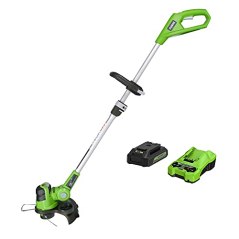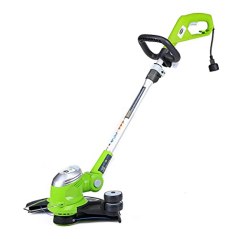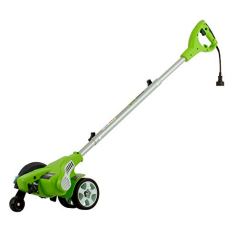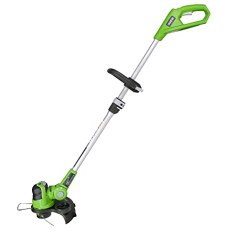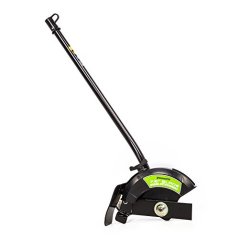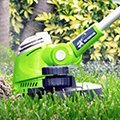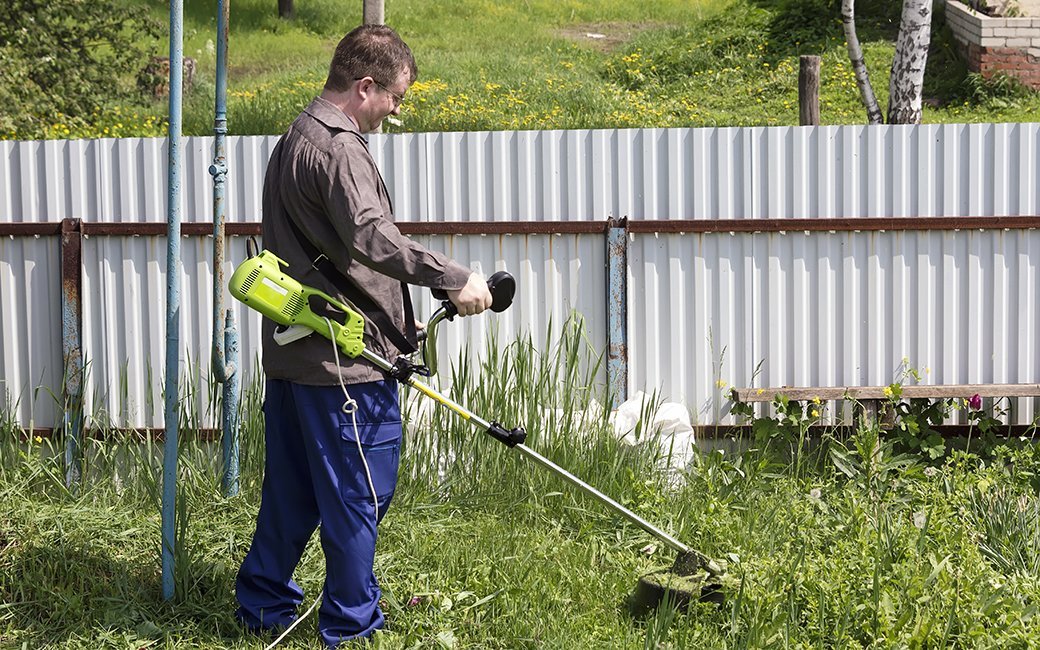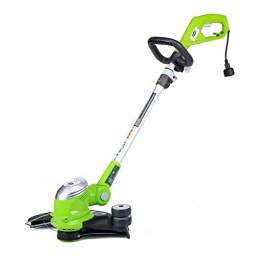Buying guide for best greenworks edgers
A nice, clean edge finishes a lawn to perfection, keeping paved areas and drives neat and tidy and showing your borders at their best. For many years, edging was a time-consuming manual task with a half-moon tool. Big, gas-powered edgers did exist, but they weren’t practical — or affordable — for most. However, with today’s powered edgers and string trimmer edgers, the job is no longer a chore.
Electric edgers have brought these power tools within most people’s budgets, and they are arguably the most efficient and cost effective of this type of garden equipment. The Greenworks range in particular has proved popular for both its quality and variety.
We’ve been assessing these impressive tools in more detail, looking features that are designed to make your life easier at a very reasonable cost. In the following buyers guide we discuss all the things you’ll want to consider when making your choice.
Key considerations
Power
If you’re buying a powered lawn edger, the question of whether to opt for gas or electric will usually crop up. Gas-powered machinery still offers optimum performance, but for most people electric tools provide more than enough power, and they’re easier to use and maintain. Your decision then is between corded and cordless.
Corded: These edgers are invariably cheaper than their cordless counterparts. In modest yards, they provide an effective and economical solution. Their big drawback is the need for an extension cord. These are not only frustrating to use at times, but they can also restrict your effective range to 100 feet, the maximum safe recommended length.
Cordless: In a large garden, you probably need the freedom offered by a cordless edger. While in the past these have been criticized for a lack of power and the need for frequent recharging, it’s an area that has improved in recent years. Corded edgers still have the advantage in terms of consistent performance, but top cordless models are now very competitive.
Edger vs. string trimmer
Edger: If you’re creating new edges alongside hard surfaces, or edging flower borders and vegetable plots, a dedicated lawn edger with a sharp, solid blade is more powerful and will give you a more well-defined and cleaner cut. The adjustable depth feature on the Greenworks model is particularly useful.
String trimmer: A string trimmer is more versatile than an edger. It can help you maintain and tidy up existing borders, and it doubles as a weed remover in other parts of the garden. If you have driveways or paths that are higher than the surface of your lawn, a dedicated edger may not be practical, whereas a string trimmer’s horizontal cutting action can make the job a breeze.
Features
Motor
If you’re choosing a cordless edger/string trimmer, you have a choice of a brush or brushless motor. The former is cheaper, but brushless motors make more efficient use of battery power, and that would be the option we recommend.
Battery
The batteries supplied as standard with these cordless tools are 2 ampere hours (Ah). It’s important that you buy the right voltage to go with the motor (24 volt or 40 volt), but a larger Ah capacity means more consistent performance for longer. If you consider buying a spare battery so you don’t have to stop working when recharging, 4 Ah and 5 Ah alternatives are available.
It’s also worth bearing in mind that Greenworks Max batteries are compatible with a wide variety of the company’s garden equipment. Once you’ve invested in one, you can see considerable savings on other devices by buying bare tools.
Line feed
There are two types of line feed generally available: bump feed and auto feed.
Bump feed: This is operated by the user “bumping” the head of the string trimmer on the ground. This activates a button and spring mechanism, which then feeds a set length of new line.
Auto feed: Auto line feed doesn’t require any action on the part of the user. The spool automatically senses when new line is required. The latter has received some criticism from owners, though it’s not a common complaint.
Spool
Spools can be single or dual line; in other words, there’s one piece of line or two doing the cutting. Given that the second type has double the cutting edges for the same rotation speed, it will cut faster and perform better in thicker grass and weeds.
When the spool runs out, you have the option of either replacing the whole unit or buying line separately and winding it yourself. The latter takes a little more effort, but it can usually save you money.
Other features
Length: The main stem of the string trimmer/edger is usually adjustable for length, enabling you to adjust it for comfort.
Cord lock: This prevents the plug from being pulled out accidentally, something that can be surprisingly annoying!
Hoop guide: A wire hoop guide is fitted to the front of most string trimmers. The line is usually rotating too fast for you to see, so this gives you a clear indication of how far you’re cutting. It helps you avoid slicing through valued plants or stripping the paint off fences.
Greenworks edger prices
Inexpensive: The 5.5-amp, 15-inch corded string trimmer/edger is just under $40, not a lot for such a capable tool.
Mid-range: The Greenworks 12-amp edger, at close to $60, offers good value for a dedicated tool. Although you might expect the edger attachment to be less, it’s actually almost $20 more.
Expensive: The most powerful Greenworks cordless string trimmer/edger is the 40-volt model at $120, which includes a 2.0 Ah battery and charger. As a bare tool it’s around $55, a great deal if you already have a compatible Greenworks Max tool.
Extension cord: If you need a heavy-duty extension cord, a good-quality one costs around $25.
For your safety
When using an extension cord, always plug it into a ground fault circuit interrupter (GFCI). It will cut the electricity supply in the event of a short circuit or other problem, and it could save you from what might be a fatal shock.
STAFF
BestReviews
Tips
- Edge when the lawn is in the right condition. The lawn should be well established, firm, and fairly dry, but not so dry that the soil is crumbly or dusty.
- Walk on the path. When doing edge maintenance alongside a path, walk on the path, not on the grass.
- Be patient. Work slowly so you maintain an even, tidy cut.
- Don’t damage the grass. When creating a new border, be careful not to damage the grass. If it doesn’t run right up to the designated edge, the soil will eventually erode back to the point where the roots of the grass are holding it together.
- Wear protective gear. Wear gloves and eye protection when trimming or edging. Avoid shorts or sleeveless shirts. There’s always a chance that a stone or other debris can get tossed up. Chopped up weeds can still sting or cause skin rashes.
Other products we considered
With a number of similar-looking garden tools available, you might ask whether a standard string trimmer is good enough for the task, and we did look at a couple of alternatives at both ends of the price range. The 13-inch Greenworks 21212 Corded String Trimmer is a perfectly capable tool for the small garden, it weighs only 7 pounds, and it’s one of the cheapest high-quality string trimmers on the market.
At the other end of the spectrum is the immensely powerful 16-inch Greenworks PRO ST80L210 Cordless String Trimmer. It’s a feature-packed, fast-charging, high-performance tool that we think will satisfy the most demanding user. So why didn’t either of these make our recommended list? They both have fixed heads. They’re great for trimming — and if you have hard surfaces above your lawn, they’ll do a superb job of tidying the edges — but when it comes to vertical cutting, they’re just not practical, no matter how cheap or powerful.
FAQ
Q. Do lawn edgers need much maintenance?
A. One of the big advantages of an electric edger over a gas-powered model is the low maintenance requirements. Pretty much all you need to do is check the cord for damage, make sure nuts and bolts are done up properly, and give it a good clean after use. At the start of the season, you might want to replace the line with a new spool. The line can go brittle over winter.
Q. Does the line in my string trimmer make a difference?
A. It can. Most are supplied with basic round line (largely because it’s the most economical), which does come in for some criticism from users. Square line is more aggressive, but it requires more care so as not to cause accidental damage. There are multisided and twisted versions that are claimed to cut more cleanly and deliver heavy-duty performance, but they have been known to break more often. These alternatives are also more expensive. Thicker line will handle more difficult tasks, but you’ll need to consult your owner’s manual for the maximum appropriate for your tool.
Q. Isn’t a manual lawn edger a more environmentally friendly alternative?A. It is, though it’s still the product of a manufacturing process, which has some impact. It could also be argued that it would be better for you. It will probably keep you fitter than using a powered device! If you have the time to spare, or you have particularly complex or small borders, a manual edger is worth considering. However, many of the best cost as much as a Greenworks powered alternative.


